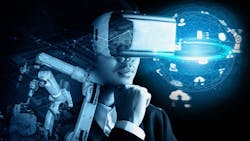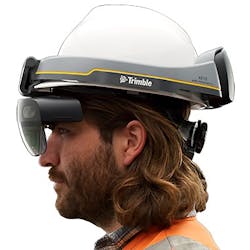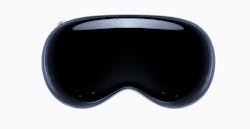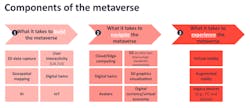Industrial Augmented Reality Status Check
From 2013, with the release of the first generation of Google Glass, until COVID altered nearly every aspect of our business and personal lives, the rapid development of augmented reality (AR) technologies gave the impression that some sort of headset wearable would soon become a routine component of an industrial worker’s toolset.
Key reasons for the slow uptake of AR headsets in industry include cost, durability (only a few headsets are specifically designed for industrial use, such as those from Tacit, RealWear and Honeywell) and the fact that the data delivered by many industrial AR applications can also be accessed via handheld devices when needed or via text and email notifications.
IoT Analytics, in its recent report on the enterprise AR market and the industrial metaverse, says “the current generation of augmented reality hardware has been received with mixed feedback, and its adoption is lagging behind ambitions.” According to IoT Analytics’ data, less than 17% of enterprises have rolled out AR technology in some form.
However, among those companies that have deployed headset AR technologies, some “raved about the use in industrial settings,” says IoT Analytics. For example, Michael Hinckley, manager of digital manufacturing at Northrop Grumman, says, “The feedback from users has been 10 out of 10. We have gotten hardly any negative feedback from the hundreds and hundreds of users that we have put our HoloLenses on.”
Positive comments, however, are equalized by complaints, such as from the U.S. army, which, in some reports, says AR technology made soldiers worse at their job.
- Remote field assistance. Using AR to virtually guide users in tasks they have not performed before (e.g., receiving aid from an expert in a different, remote location). Companies such as Boeing and Xerox have adopted this use case.
- Operations guidance.Using AR alongside traditional processes to provide additional guidance to workers through visual assistance.
Though different, these two applications are closely connected in terms of guiding worker actions. The principal difference is in whether the workers using the AR technology are using it to connect with remote experts who can provide relevant information and visuals to the worker or whether workflow software in the AR technology guides the worker through the tasks.
“Many potential adopters—even some of the early proponents of the technology—are waiting for the [AR headset] technology to improve and costs to come down,” according to IoT Analytics. “Key pain points include the weight of the devices, limited battery life or computing capacity, dizziness when using the devices, and a limited field of view.”
About the Author
David Greenfield, editor in chief
Editor in Chief

Leaders relevant to this article:



